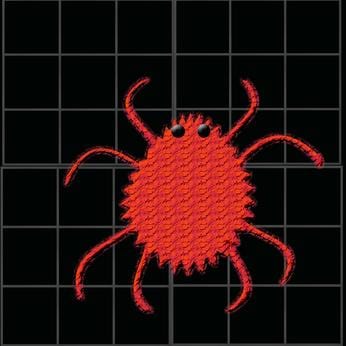It’s every mother’s nightmare: After a day of play in the park, you’ve found a tick on your child. Lyme disease is a well-publicized bacterial disease that is transmitted by deer ticks. According to the Cleveland Clinic, only 1 percent of deer ticks carries the bacteria, but it’s wise to be aware of the signs and symptoms of Lyme disease. A course of antibiotics is the standard treatment. Mark the date of the bite, save the tick body if possible, and keep an eagle eye out for signs that the disease may have been transmitted.
Bull’s-Eye Rash
The first and main symptom of Lyme disease in 80 to 90 percent of cases is a rash, usually–but not always–at the site of the bite. Appearing between three and 30 days after the tick bite, Lyme disease rash usually–but not always–appears as a bull’s-eye that has an unaffected ring of clear skin with an outer ring of rash. The American Lyme Disease Foundation states that although the average rash size is from 5-to-6 inches, the range is from 2-to-24 inches. Typically, the rash will last from three to five weeks and is usually not itchy or painful. On darker-skinned people, the rash may appear to be a bruised area and may be overlooked easily.
Flu-Like Symptoms
Swollen nymph glands, pain in the joints, fever and chills, as well as fatigue and headache, may be brief and mild symptoms that occur at approximately the same time as the rash. Unlike the flu or similar illnesses, these symptoms are typically mild and are often ignored if the rash is not present, or if the tick bite has been forgotten. This is the period in which medical attention is critical to prevent long-term or permanent damage from Lyme disease, as an oral antibiotic can be prescribed.
Untreated Symptoms
Untreated, Lyme disease will progress and the flu-like symptoms will recur and become more severe. According to MayoClinic.com, often weeks or months after the initial tick bite and infection, the person will experience severe headaches and severe fatigue, as well as swelling of the knees and other joints, numbness or tingling in the extremities, facial paralysis and cardiac abnormalities. At this stage of the disease, antibiotics must be administered intravenously, and there is a risk of permanent damage, such as impaired memory, irregularities of heart rhythm, arthritis and neurological irregularities, such as neuropathy.
Photo Credit
- red fuzzy bug image by robert mobley from Fotolia.com





